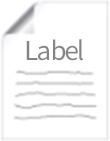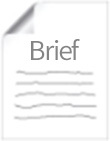Hot Products


BT THURICIDE
BT insecticide for organic caterpillar control
BT THURICIDE,BT insecticide for organic caterpillar control
BT THURICIDE is a BT insecticide to control caterpillars and various types of borers, with active ingredient Bacillus thuringiensis subspecies kurstaki (Btk). It is targeted at specific pest insects and does not harm beneficial insects, making it suitable for use with other organic spray and biocontrols. Its 4 hour reentry interval (REI) makes it an ideal moth killer for use on edible crops and in nurseries. Where to buy caterpillar insecticide, Novobac is manufacturer that produce best pesticide to kill caterpillar and other bugs.
hiddenValue
USE FOR
MODE OF ACTION
TECHNICAL
BENEFIT
INSTRUCTION
DOCS
-
USE FOR
Target Disease

Caterpillar

Tomato hornworm

Loopers

Armyworm

Gypsy moths

Leafroller
COMMON CROPS

tomato

pepper

lettuce

cabbage

pumpkins

grape

green beans

raspberries

roses
-
MODE OF ACTION
- When the insect ingests these toxic proteins, they bind to receptors in the midgut, causing the gut to become damaged and leading to the death of the insect within 1-5 days. This mode of action is specific to certain insects, and does not affect other animals or humans.
- Caterpillar insecticide is most effective when applied to young, actively feeding insects, as the toxic proteins are only effective when ingested. It is generally considered to be a safe and environmentally friendly alternative to chemical pesticides for organic caterpillar control. It only affects the target insects and does not have any residual effects on the environment, It is safe to harvest crops or gardening.
-
TECHNICAL
SHELF LIFE
When properly stored in a cool, dry climate, 24 months.
ACTIVE INGREDIENT
Bacillus thuringiensis subspecies kurstaki
FORMULATION TYPE
Wettable Powder
CONCENTRATION
BTA IU 32000 /mg
PACKAGING
BT Insecticide 1 kg per foil bag
-
BENEFIT
- Caterpillar killer used to control moth larvae (caterpillars).
- Reliable and easy-to-mix wettable powder
- Safe for predator insects and the environment.
- No chemical resistance and can be applied up to the day of harvest.
-
INSTRUCTION
Dosage & Method

Foliar Spray

0.75-1.5 kg/ha

Early Morning or Evening

7-10 days
How do I use BT insecticide for organic caterpillar control ?
- Apply 0.75-1.5 kg per hectare, spray must be deposited at the larval feeding site
- Reapplied as needed as part of a pest management program that includes frequent scouting.
- Apply as soon as possible at the first sign of egg-laying or when newly-hatched worms (1st instar larvae) are present.
- Can be applied by ground or air with enough water to ensure thorough and even coverage
- If rapid knockdown of high leaf eating caterpillar populations or non-lepidopterous species is necessary, include an effective contact caterpillar killer pesticide in combination with bt for caterpillars. For heavy worm infestations, use the higher rate.
- Using higher water volumes for applications has been shown to improve control of targeted pests.
- The best times to apply the bt for caterpillars are early morning or evening when the air is calm.
When should I use BT insecticide?
The sprays should be applied to small larvae, from newly-hatched to 2nd instar, for optimal control. High label rates may be required to kill larger larvae. Continue applying it as part of a normal spray program until the pest is under control. More information see see application label.
- For Light Brown Apple Moth: Apply when newly hatched larvae are present and before the leaves are rolled or webbing is noticeable.
- For Banana Moth: Drench the bark of newly emergent shoots following pruning or apply it to susceptible plant tissues when the moth larvae are active.
- For European Grapevine Moth: Apply the moth insecticide at the egg stage or when the larvae are newly hatched, before the leaves are rolled or the larvae have entered the fruit.
- For European Pepper Moth: Start applying the moth killer at the egg-laying stage and continue at 3-5 day intervals throughout the larval feeding period.
-
DOCS


CONTACT US

Office 38/1502, No 660,Hanguang Rt., Changsha City, Hunan, China






